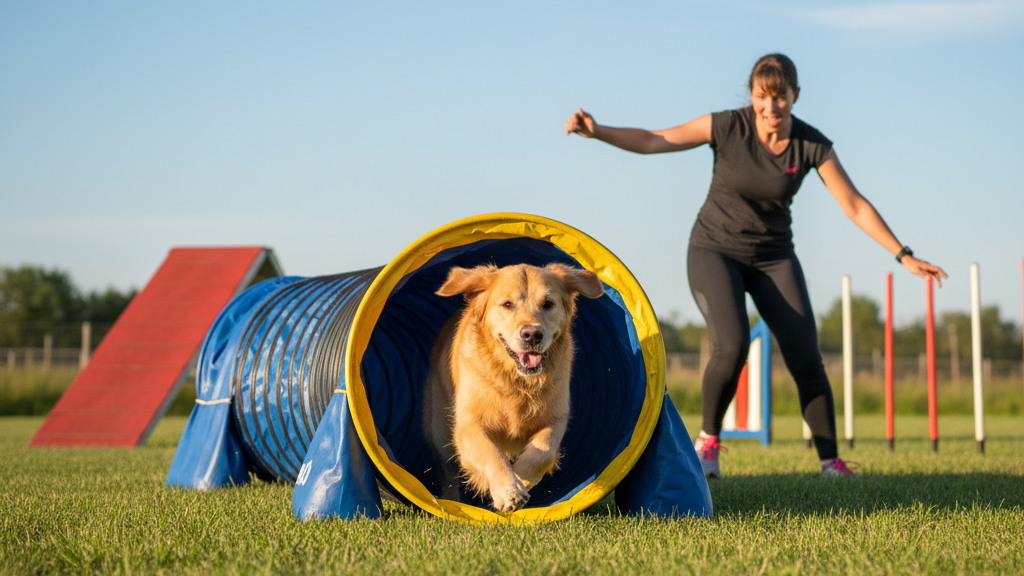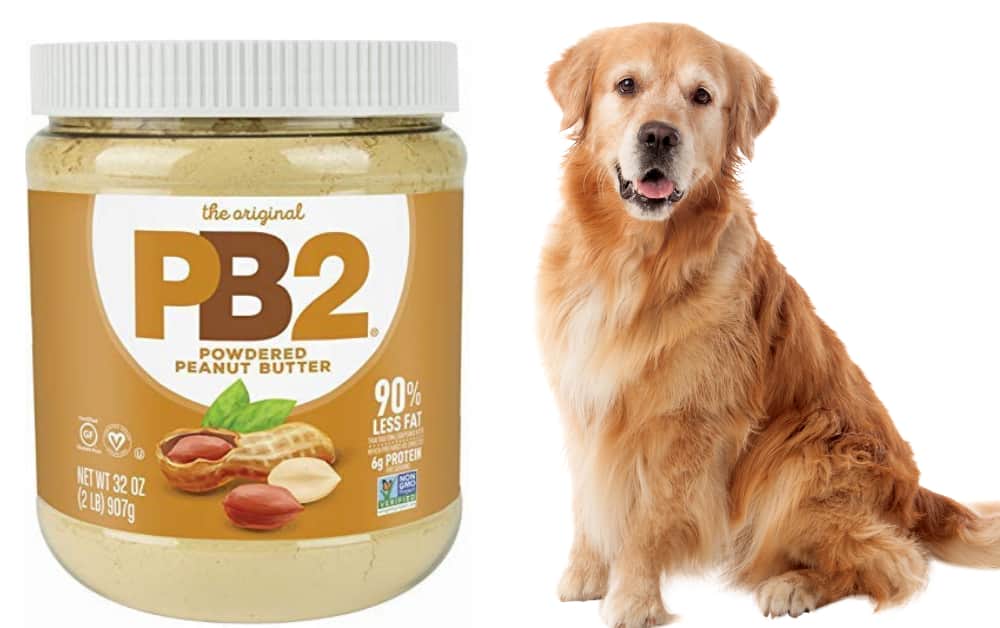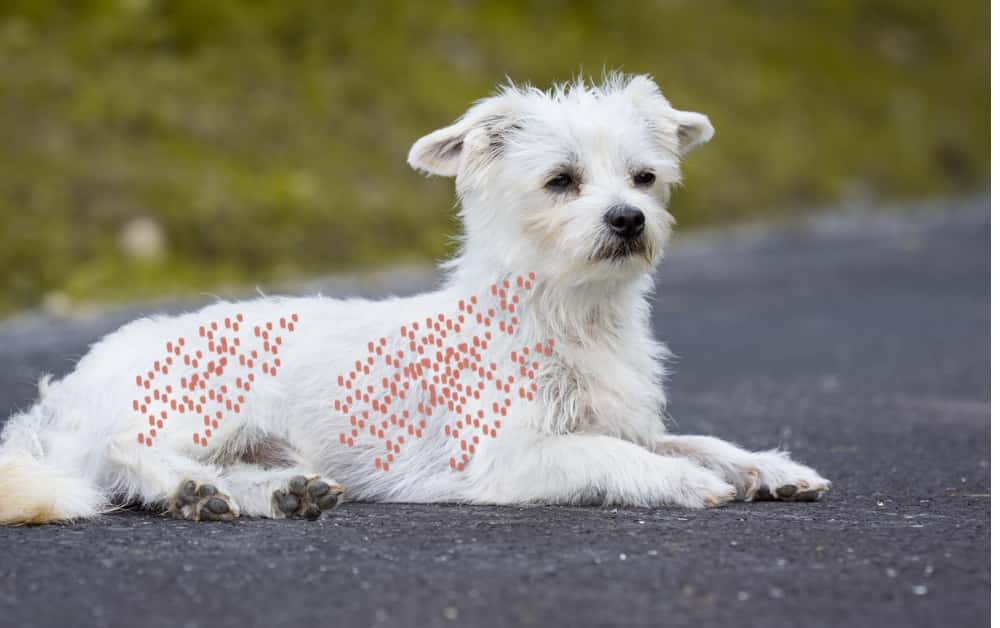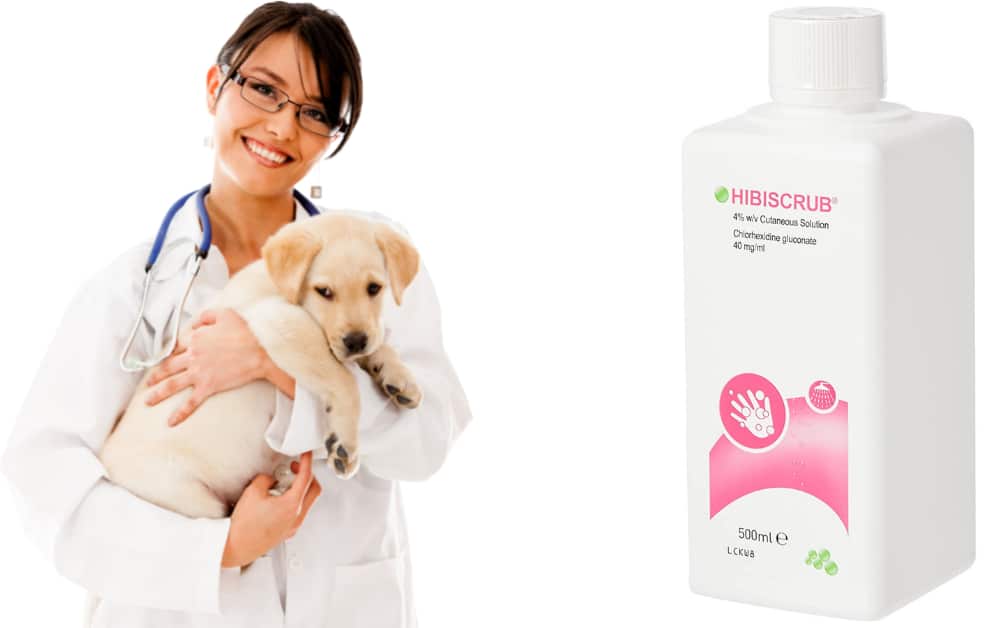Dog agility training is an exciting sport that builds a stronger bond between you and your canine companion while providing excellent physical exercise and mental stimulation. This comprehensive guide covers everything beginners need to know about dog agility training, from essential equipment and basic commands to advanced techniques and competition preparation.
Whether you have a high-energy Border Collie or a determined Terrier, agility training offers a fun way to channel your dog’s natural abilities into a rewarding activity that enhances obedience, confidence, and overall well-being.
Key Takeaways
- Dog agility training strengthens the bond between owners and their dogs through teamwork and communication
- Starting with basic obedience commands is essential before introducing agility equipment
- Essential beginner equipment includes jumps, tunnels, and weave poles
- Positive reinforcement techniques yield the best results in agility training
- Regular practice sessions of 10-15 minutes are more effective than occasional long sessions
- Safety should always be the top priority to prevent injuries
- Progress should be gradual, celebrating small achievements along the way
- Agility training provides both physical exercise and mental stimulation for dogs
What is Dog Agility Training?
Dog agility is a competitive sport where handlers direct their dogs through a timed obstacle course. The sport originated in the late 1970s as entertainment at the Crufts Dog Show in the United Kingdom and has since grown into a popular activity worldwide. In agility competitions, dogs must navigate various obstacles including jumps, tunnels, weave poles, A-frames, and seesaws, guided solely by their handler’s voice and body signals.
For beginners, dog agility training offers a structured way to teach your dog to navigate these obstacles safely and efficiently. The training process emphasizes teamwork, communication, and trust between you and your canine companion.
According to the United States Dog Agility Association (USDAA), the sport is open to dogs of all breeds and sizes, with height classes ensuring fair competition.
The beauty of dog agility training lies in its adaptability. While some dogs may eventually compete at high levels, many owners participate simply for the joy of working with their dogs and providing them with stimulating physical and mental exercise. The training process itself can be just as rewarding as competing, as you watch your dog master new skills and grow in confidence.
Benefits of Dog Agility Training
Engaging in dog agility training offers numerous benefits for both you and your furry friend. Understanding these advantages can help motivate you through the training process and highlight why this activity has become so popular among dog owners.
Physical Benefits
Agility training provides excellent physical exercise for dogs. The running, jumping, and weaving involved in navigating an agility course helps improve:
- Cardiovascular health: Regular agility sessions strengthen your dog’s heart and lungs
- Muscle development: The various obstacles engage different muscle groups, promoting balanced strength
- Coordination and balance: Dogs learn to control their bodies more precisely as they navigate equipment
- Weight management: The physical activity helps maintain a healthy weight, reducing the risk of obesity-related health issues
- Flexibility: The stretching and reaching required for certain obstacles improves overall flexibility
For handlers, setting up and running through courses provides light exercise and increased physical activity compared to a typical walk.
Mental Benefits
The mental stimulation provided by agility training is just as important as the physical benefits:
- Problem-solving skills: Dogs learn to assess obstacles and determine the best way to navigate them
- Focus and concentration: Agility requires dogs to pay close attention to their handler’s cues
- Confidence building: Mastering new obstacles boosts your dog’s self-esteem
- Mental fatigue: A mentally tired dog is often a well-behaved dog, reducing destructive behaviors at home
- Learning capacity: Regular training improves your dog’s ability to learn new skills in other areas
Relationship Benefits
Perhaps the most significant benefit of dog agility training is the improvement in your relationship with your dog:
- Enhanced communication: You’ll learn to read your dog’s body language and communicate more effectively
- Increased trust: Working together through challenges builds mutual trust and respect
- Stronger bond: The teamwork required in agility strengthens your connection
- Quality time: Agility training provides dedicated, structured time to spend with your dog
- Shared joy: Celebrating successes together creates positive associations and happy memories
The American Kennel Club (AKC) notes that many participants report their dogs become more attentive and responsive in all aspects of their lives after beginning agility training.
Essential Equipment for Beginners
Starting dog agility training doesn’t require a massive investment in equipment. As a beginner, you can start with basic items and gradually expand your collection as you and your dog progress. Here’s a table of essential equipment for those just starting out:
| Equipment | Purpose | Beginner-Friendly Options |
|---|---|---|
| Jumps | Teach dogs to clear obstacles | Broomsticks on buckets, adjustable practice jumps |
| Tunnel | Build confidence and speed | Collapsible practice tunnels, shorter lengths |
| Weave Poles | Develop agility and coordination | Stick-in-the-ground poles, fewer poles to start |
| Pause Table | Teach control and obedience | Low, sturdy platform or box |
| Tire Jump | Improve precision | Practice tire jumps with adjustable heights |
| Contact Obstacles | Teach control on elevated surfaces | Mini A-frames, lowered contact equipment |
Jumps
Jumps are one of the most fundamental pieces of agility equipment. For beginners, you don’t need to invest in expensive competition jumps. Simple jumps can be created using broomsticks balanced on buckets or cinder blocks. As you progress, you might want to purchase adjustable practice jumps that allow you to gradually increase the height according to your dog’s ability and competition standards.
When introducing jumps, start with the bar on the ground or at a very low height. The goal initially is to teach your dog to go between the standards, not necessarily to jump. Gradually raise the height as your dog becomes more confident and skilled. The Association of Pet Dog Trainers (APDT) recommends keeping jump heights low for growing puppies to protect their developing joints.
Tunnels
Tunnels are excellent for building confidence in dogs. Many dogs naturally love tunnels, while others may be hesitant at first. Start with a short, straight tunnel or even a fabric chute (a collapsed tunnel with only the opening visible). Encourage your dog through with treats, toys, or by having a helper call them from the other end.
Practice tunnels can be purchased relatively inexpensively and are often collapsible for easy storage. As your dog gains confidence, you can introduce longer tunnels or curved ones to increase the challenge.
Weave Poles
Weave poles are often the most challenging obstacle for dogs to master. For beginners, start with just 2-4 poles spaced widely apart. You can use stick-in-the-ground poles or even PVC pipe inserted into bases. The 2×2 method (using two sets of two poles) is a popular training approach that gradually teaches the weaving motion.
As your dog becomes more proficient, you can add more poles and gradually move them closer together until they match competition spacing. The USDAA provides specific regulations on weave pole spacing for competition if you eventually plan to compete.
Pause Table
The pause table teaches dogs impulse control and is a simple piece of equipment to replicate at home. A low, sturdy platform or box can serve as a beginner pause table. The goal is for your dog to jump onto the table and pause for a designated time (typically 5 seconds in competition).
Start by teaching your dog to confidently get on the table, then gradually introduce the pause command. Reward your dog for staying on the table until released. This obstacle is particularly valuable for teaching dogs to control their excitement during a run.
Tire Jump
The tire jump requires precision as dogs must jump through the center of the tire without touching it. Beginner tire jumps often have adjustable heights and some can be disassembled for easy storage. Start with the tire low or even resting on the ground to teach your dog to go through it.
As with other jumps, gradually raise the height as your dog becomes more confident. The circular shape of the tire can be intimidating for some dogs initially, so patience and positive reinforcement are key.
Contact Obstacles
Contact obstacles include the A-frame, dog walk, and seesaw. These elevated obstacles have “contact zones” at the bottom that dogs must touch with at least one paw for safety. For beginners, miniature versions of these obstacles or lowered contact equipment are excellent starting points.
Safety is paramount when training on contact obstacles. Always ensure the equipment is stable and appropriate for your dog’s size and skill level. The ASPCA recommends consulting with a professional trainer when introducing contact obstacles to ensure proper technique and prevent injuries.
Dog Agility Training for Beginners: Getting Started
Before introducing agility equipment, your dog should have a solid foundation in basic obedience. These fundamental commands form the basis of communication during agility training and ensure your dog’s safety on the course.
Essential Obedience Commands
The following commands are crucial for agility success:
- Sit: The foundation of many other commands and useful for the pause table
- Stay: Teaches impulse control and is essential for the start line and pause table
- Come: Ensures your dog returns to you when called
- Down: Useful for the pause table and general control
- Leave it: Helps your dog ignore distractions and focus on the task
- Watch me or Focus: Gets your dog’s attention before starting a sequence
If your dog hasn’t mastered these basic commands yet, spend time reinforcing them before introducing agility equipment. The Humane Society recommends positive reinforcement techniques for teaching these commands, using treats, praise, and play to reward desired behaviors.
Agility-Specific Commands
Once your dog has a solid foundation in basic obedience, you can introduce agility-specific commands:
- Jump: Signals your dog to go over a jump
- Tunnel: Directs your dog to go through a tunnel
- Weave: Indicates it’s time to navigate the weave poles
- Table: Tells your dog to get on the pause table
- Contact: Reminds your dog to touch the yellow contact zones on obstacles
- Out: Sends your dog away from you to take an obstacle
- Here: Calls your dog toward you
- Go: Sends your dog forward
Consistency is key when using these commands. Choose words that are distinct from each other and use them consistently. Many handlers use a combination of verbal cues and body language to direct their dogs through the course.
Introduction to Equipment
When first introducing agility equipment, follow these steps:
- Let your dog investigate: Allow your dog to sniff and explore the equipment at their own pace
- Shape the behavior: Use treats or toys to lure your dog through or over the equipment
- Add the command: Once your dog is confidently performing the action, add the verbal command
- Fade the lure: Gradually reduce the use of treats or toys as a lure, using them as rewards after completion instead
- Increase difficulty: Gradually raise jumps, add more weave poles, or increase speed
Always keep training sessions short and positive. End on a success, even if it means going back to an easier version of the obstacle. The goal is to build confidence and create positive associations with the equipment.
Training Techniques and Progression
Effective training techniques are crucial for success in dog agility. Understanding how to progress through skills and overcome challenges will help you and your dog enjoy the training process and achieve your goals.
Positive Reinforcement Training
Positive reinforcement is the foundation of effective agility training. This approach involves rewarding desired behaviors to increase the likelihood they’ll be repeated. Rewards can include:
- Food treats (small, high-value treats work best)
- Praise and petting
- Play with a favorite toy
- The opportunity to perform another fun obstacle
The key to effective positive reinforcement is timing. The reward must come immediately after the desired behavior to clearly mark what you’re rewarding. Many agility trainers use a clicker to mark the exact moment of the desired behavior, followed by a reward. This technique, known as clicker training, helps improve communication and timing.
According to the Certification Council for Professional Dog Trainers (CCPDT), positive reinforcement not only teaches skills effectively but also builds confidence and strengthens the relationship between dogs and handlers.
Shaping Behaviors
Shaping is a training technique that involves rewarding successive approximations of a desired behavior. Instead of waiting for the complete behavior, you reward small steps toward the final goal. For example, when teaching weave poles:
- Reward your dog for looking between the poles
- Reward for taking one step between the poles
- Reward for moving further through the poles
- Reward for completing the entire set
Shaping requires patience and keen observation skills, but it’s incredibly effective for teaching complex behaviors like weaving through poles or navigating contact obstacles.
Training Progression
A structured training progression helps ensure your dog develops skills systematically. Here’s a typical progression for agility training:
- Foundation skills: Basic obedience and focus work
- Obstacle familiarization: Introducing each obstacle individually at low difficulty
- Obstacle proficiency: Building confidence and skill on each obstacle
- Sequencing: Combining 2-3 obstacles in a row
- Handling skills: Teaching your dog to respond to your body language and cues
- Course work: Running longer sequences and full courses
- Competition preparation: Proofing skills and building speed and accuracy
This progression typically takes several months to a year, depending on your dog’s age, aptitude, and the frequency of training sessions. The chart below shows a typical timeline for agility training progression:Line Wrapping
Training Timeline for Dog Agility Beginners
Months 1-2: Foundation Skills & Basic Obedience
- Focus on basic commands (sit, stay, come, down)
- Build motivation and toy drive
- Introduction to flatwork (movement exercises without equipment)
Months 2-3: Equipment Introduction
- Jumps (low height)
- Tunnel (straight, short)
- Table (getting on and off)
- Basic contact obstacles (low height)
Months 3-4: Obstacle Proficiency
- Increasing jump heights gradually
- Longer tunnels, adding curves
- Introduction to weave poles (2×2 method)
- Contact obstacle performance
Months 4-6: Sequencing
- 2-3 obstacle sequences
- Basic handling maneuvers (front crosses, rear crosses)
- Building speed and confidence
- Weave pole progression (adding more poles)
Months 6-9: Course Work
- 5-8 obstacle sequences
- Advanced handling techniques
- Distance work
- Proofing behaviors
Months 9+: Competition Preparation
- Full courses
- Building consistency and speed
- Trial simulations
- Focus on specific challenges
Common Training Challenges and Solutions
Every dog and handler team faces challenges during agility training. Being prepared to address these common issues will help you progress more smoothly:
Lack of Focus
If your dog becomes distracted during training:
- Shorten training sessions
- Increase the value of your rewards
- Train in less distracting environments
- Incorporate focus exercises before starting agility work
- Ensure your dog is getting enough physical exercise outside of training
Fear of Equipment
For dogs hesitant about obstacles:
- Break the behavior into smaller steps
- Use shaping to build confidence gradually
- Never force your dog onto equipment
- Use higher-value rewards for brave attempts
- Allow your dog to approach at their own pace
Weave Pole Difficulties
Weave poles are often the most challenging obstacle:
- Use the 2×2 training method for better understanding
- Consider channel weaves or weave-a-matic as training tools
- Keep sessions short to prevent frustration
- Celebrate small improvements
- Consider professional guidance for weave training
Contact Obstacle Issues
Dogs often struggle with hitting contact zones:
- Use targets on the contact zones
- Teach a specific contact behavior (like a nose touch)
- Lower the obstacle initially to slow your dog down
- Use contact trainers (smaller contact obstacles)
- Consider running contacts for some dogs
Handler Timing and Position
Handler errors can confuse dogs on course:
- Practice your footwork without your dog
- Video your training sessions to analyze your movements
- Work with a coach to improve handling skills
- Start with simpler handling techniques and progress gradually
- Remember that less is often more—avoid over-handling
The International Association of Animal Behavior Consultants (IAABC) emphasizes that patience and consistency are key when working through training challenges. Every dog learns at their own pace, and comparing your progress to others can lead to frustration.
Preparing for Your First Competition
Once you and your dog have mastered the basic obstacles and can run short sequences, you might consider entering your first agility competition. Preparing properly will help ensure a positive experience for both you and your dog.
Understanding Competition Levels
Agility competitions typically offer different levels to accommodate dogs at various stages of training. While specific names vary between organizations, common levels include:
- Beginner/Novice: For dogs new to competition, with simpler courses and more generous time limits
- Intermediate/Open: For more experienced dogs with moderate course difficulty
- Advanced/Excellent: For highly trained dogs with complex courses and stricter time requirements
- Masters/Championship: The most challenging level with difficult courses and tight time constraints
When starting out, you’ll enter at the beginner level. The American Kennel Club (AKC) provides detailed information about their specific titling classes and requirements.
Trial Preparation
Preparing for your first trial involves both physical and mental preparation:
Physical Preparation
- Ensure your dog is in good physical condition for competition
- Practice on equipment similar to what you’ll encounter at trials
- Build your dog’s endurance for running full courses
- Proof your dog’s skills in new environments
Mental Preparation
- Visit a trial as a spectator to understand the environment
- Practice in different locations to prepare for new surroundings
- Develop a pre-run routine to help you and your dog focus
- Set realistic goals for your first trial (completion, not necessarily winning)
Paperwork and Requirements
- Research the specific organization’s requirements for entry
- Ensure your dog meets all health and vaccination requirements
- Understand the entry process and deadlines
- Familiarize yourself with the rules and scoring system
What to Expect at Your First Trial
Understanding what happens at a trial can help reduce anxiety for both you and your dog:
Check-in and Course Walkthrough
- Arrive early to allow time for check-in and acclimation
- Walk the course without your dog to plan your handling strategy
- Observe other handlers running the course
- Note any challenging sequences or potential problem areas
The Run
- Keep your dog calm and focused before your run
- Use your planned handling strategy but be prepared to adapt
- Focus on clear communication rather than speed
- Remember to have fun and celebrate your dog’s efforts
After the Run
- Review your score sheet to understand any faults
- Watch videos of your run if available
- Note areas for improvement in future training
- Celebrate your accomplishments, no matter how small
Common Competition Faults
Understanding common faults can help you avoid them during your run:
- Refusals: When a dog approaches an obstacle but doesn’t complete it
- Runouts: When a dog runs past an obstacle
- Knocked bars: When a dog displaces a jump bar
- Wrong course: When a dog takes an obstacle out of sequence
- Missed contacts: When a dog doesn’t touch the contact zone on contact obstacles
- Time faults: When the team exceeds the course time limit
The North American Dog Agility Council (NADAC) provides detailed rulebooks explaining all possible faults and their penalties.
Advanced Tips for Success
As you progress in your agility journey, these advanced tips can help you refine your training and improve your performance:
Course Analysis Skills
Learning to analyze courses effectively is crucial for success in competition:
- Identify challenges: Look for potential problem areas on the course map
- Plan handling options: Consider multiple ways to handle difficult sequences
- Understand course flow: Identify the natural path your dog will want to take
- Consider your dog’s strengths: Plan routes that play to your dog’s abilities
- Factor in the environment: Consider how surface conditions or lighting might affect performance
Handling Techniques
Advanced handling techniques allow you to navigate complex courses more effectively:
- Front Cross: A handling maneuver where you change sides in front of your dog
- Rear Cross: A side change executed behind your dog
- Blind Cross: A front cross where you don’t look at your dog during the maneuver
- Lateral Distance: Working your dog away from you at an angle
- Layering: Sending your dog over obstacles while you take a shorter path
The Agility Association of Canada (AAC) offers excellent resources on handling techniques through their training materials.
Physical Conditioning for Dogs
Proper physical conditioning is essential for performance and injury prevention:
- Warm-up routines: Develop a pre-run warm-up to prepare your dog’s muscles
- Cool-down protocols: Implement post-run stretching and cool-down activities
- Cross-training: Incorporate activities like swimming or hiking to build overall fitness
- Strength training: Use exercises like plank work and cavaletti to build core strength
- Regular veterinary check-ups: Ensure your dog is physically fit for competition
Mental Management
The mental aspect of agility is just as important as the physical skills:
- Focus exercises: Teach your dog to maintain focus despite distractions
- Ring readiness: Develop routines that help your dog perform well in the trial environment
- Stress management: Recognize signs of stress in your dog and know how to respond
- Confidence building: Create training scenarios that build your dog’s confidence
- Handler mindset: Work on your own mental preparation and focus
The International Association of Animal Behavior Consultants (IAABC) provides resources on understanding and managing canine stress in performance settings.
FAQs
What age should I start agility training with my dog?
Most experts recommend waiting until your dog is at least 12-18 months old before starting formal agility training. For large and giant breeds, waiting until 18-24 months is advisable to allow for proper bone and joint development. However, you can start foundation training and introduce very low obstacles at younger ages. Always consult with your veterinarian before starting any athletic training with your puppy.
Is my dog too old to start agility training?
Dogs can start agility training at any age, as long as they are in good health. Many dogs begin agility as seniors and enjoy modified versions of the sport. Older dogs may need adjustments to jump heights, less strenuous training schedules, and more thorough warm-ups and cool-downs. Always have your senior dog evaluated by a veterinarian before beginning agility training.
What breeds are best for agility training?
While Border Collies and Australian Shepherds often excel at agility, virtually any breed can participate and enjoy the sport. Mixed breeds are also welcome in most agility organizations. The most important factors are your dog’s physical fitness, temperament, and interest in the activity. Many organizations offer height classes to ensure fair competition for dogs of all sizes.
How much time does agility training require?
Most successful agility teams train 2-4 times per week, with sessions lasting 15-30 minutes. Short, frequent training sessions are more effective than occasional long sessions. In addition to formal training, daily practice of foundation skills like focus and basic obedience is beneficial. The time commitment increases as you progress to competition levels, but many participants find the investment worthwhile for the enjoyment and bonding it provides.
Final Thoughts:
Dog agility training offers a wonderful opportunity to build a stronger bond with your canine companion while providing excellent physical exercise and mental stimulation. From the initial introduction to basic equipment to the excitement of your first competition, the journey through agility training is filled with learning, growth, and joy.
Remember that success in agility is measured by the progress you and your dog make together, not just by ribbons and titles. The communication skills, trust, and teamwork you develop will enhance all aspects of your relationship with your dog.
As you embark on your agility adventure, keep these key points in mind:
- Start with a solid foundation in basic obedience
- Introduce equipment gradually and positively
- Use positive reinforcement techniques to build confidence
- Keep training sessions short and fun
- Progress at a pace that’s comfortable for you and your dog
- Prioritize safety to prevent injuries
- Celebrate small successes along the way
Whether your goal is to compete at the highest levels or simply to enjoy a fun activity with your dog, agility training offers rewards that extend far beyond the course. The confidence, focus, and teamwork you develop together will enrich your relationship for years to come.
So grab your treats, set up a simple jump, and begin your agility journey today. You and your dog have an exciting adventure ahead!










![Can Dogs Eat Blood? 7 Side Effects [Expert Opinion]](https://petskor.com/wp-content/uploads/2022/04/Webp.net-resizeimage-12.jpg)
